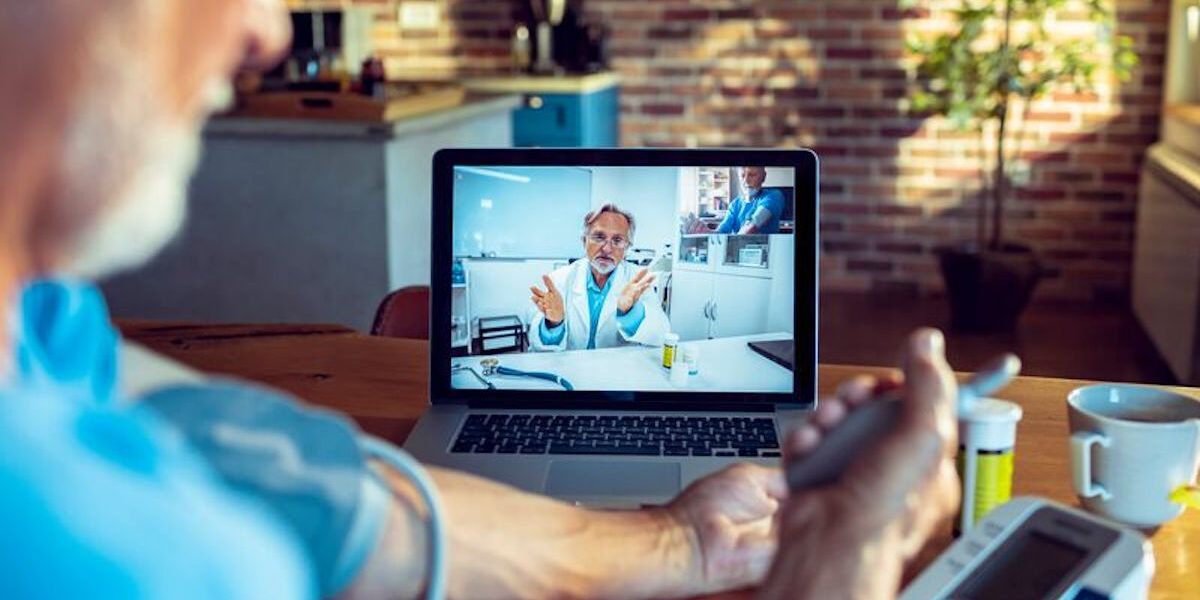Benefits of Telehealth Monitoring Devices
Telehealth monitoring devices offer numerous advantages that have transformed the healthcare delivery system. Among some of these changes include improved patient access, engagement, real-time monitoring, cost and time efficiencies. Below are examples of the several benefits telehealth monitors provide and how the devices monitor patients.
Enhanced Patient Access and Convenience
Telehealth monitoring devices allows patients to check their health at home, minimizing frequent hospital visits. This benefits patients with chronic conditions or those who live in remote areas. It reduces transportation-related challenges and allows for real-time health monitoring. As a result, patients can receive timely medical intervention, resulting in more effective disease management and improved outcomes.
Increases Patient Engagement
Patients who receive ongoing care from their healthcare providers are usually more committed to achieving the best results. Also, they become more engaged and actively participate in their own care.
Promotes Proactive Healthcare
Telehealth monitoring devices facilitating early detection and intervention. Monitoring vital signs and health metrics assists healthcare providers catch problems early. This prevents complications and hospital stays. This is especially vital for high-risk patients, such as those recovering from surgeries or managing complex health conditions.
Continuously Provides Data
Healthcare professionals use this data to create personalized treatment plans. Each treatment plan is specific to meet the needs of each patient. This ultimately promotes improved health maintenance.
Contributes to Cost Savings
The use of remote patient monitors provides continuous care to patients. This continuous care can catch issues early and reduce healthcare expenses and reduce ER visits and hospital readmissions. Cost savings and resource management within the healthcare system are key in efficient patient management and improved outcomes.
Increases Revenue for a Provider
This cost savings can improve a provider’s bottom line if they are incentivized to improve patient outcomes and reduce the cost of care if they are part of a shared savings program, MIPS or an APM. Since in these programs the provider can receive a bonus for this improved care by lowering costs. For example, a provider participating in an APM can potentially receive a 5% bonus on their Medicare payments or up to a 9% bonus if they participate in MIPS in future years.
Additionally, billing for RPM services (CPT Code 99457 and CPT Code 99458) or the physiologic data transmission (CPT Code 99454) can be also improve a practice’s bottom line if done effectively since it would generate a profit for the healthcare organization.
Assists in efficient Allocation of Medical Resources
Healthcare providers and healthcare organizations can prioritize cases based on real-time data and intervene as needed. Telehealth monitoring devices streamline healthcare delivery by making it more patient-centered and sustainable by focusing on who needs the care. More and more, the overall healthcare industry benefits. Providers, patients, clinical staff and healthcare systems see the advantage in using telehealth devices to help effectively and efficiently manage their time.
How Telehealth Monitoring Devices Work?
Telehealth home monitoring devices work by remotely collecting and transmitting patient’s data from patients to healthcare professionals. These devices, often worn or placed in the home, record vital signs, activity levels, and other relevant information.
The data then transmits wirelessly to a secure platform accessible to medical professionals and clinical staff through cellular or through bluetooth connectivity. Real-time data allows healthcare providers to track patient’s conditions, detect any changes, make informed decisions, adjust treatment plans when needed, and reduce the need for office visits.
Medical professionals can access the secure platform wirelessly to receive the transmitted data to improve patient care and reduce healthcare challenges.
Potential Use Cases for Telehealth Monitoring Devices
Telehealth monitoring devices provide remote healthcare management, improving patient care and reducing hospital visits. There are various types of devices.
Wearable health monitoring devices, like smart watches, help manage acute or chronic conditions and serve different purposes.
Others used are home health monitoring devices such as blood pressure monitoring, pulse oximeter, glucometer for blood sugars, and weight scales.
People also use wearable medical devices for health and fitness devices, such as fitness trackers. The following lists the potential uses of the remote patient monitoring devices:
- Monitor vitals signs for chronic conditions such as Hypertension, CHF, COPD, Obesity, and Parkinsons Disease
- Ensure medication adherence and compliance
- Support post-operative recovery
- Assist in elderly care
- Aid in maternal care
- Provide mental health support
- Conduct remote consultations, such as during an acute illness or pandemic
These remote patient monitor devices enable real-time health data collection, early intervention, and individualized treatment, enhancing healthcare outcomes.
Choosing the Best Telehealth Remote Monitoring Devices
It us always important to understand your patient population and their location to determine the right type of device. Determining if Blueooth devices or cellular enabled devices are the best go forward strategy. Usually the less tech savvy your population is the more they prefer having a cellular device since they do not have to worry about pairing issues of bluetooth devices.
Conclusion
The potential for transformation within healthcare through telehealth monitoring devices is revolutionary and powerful. RPM devices have introduced a new era of remote healthcare management. Wearable technology in healthcare has many advantages. These advantages include better patient care, engaged patients, reducing costs, saved time, improved health results, and fewer ER and hospital admissions.
These devices or wearable devices provide applications across different medical fields. They assist in chronic disease management to vital signs monitoring, medication compliance, post-operative recovery, and even mental health support.
Their ability to collect data in real-time has streamlined healthcare processes. Empowering healthcare professionals to intervene early and provide personalized treatment to patients. This continuous care has caused patients to be more engaged in their care to achieve their best health outcomes.
Telehealth monitoring devices show the strong connection between innovation and efficiently and effectively caring for patients. As we adopt these technological innovations, telehealth monitoring devices lead to patients becoming healthier and more connected in the future.







